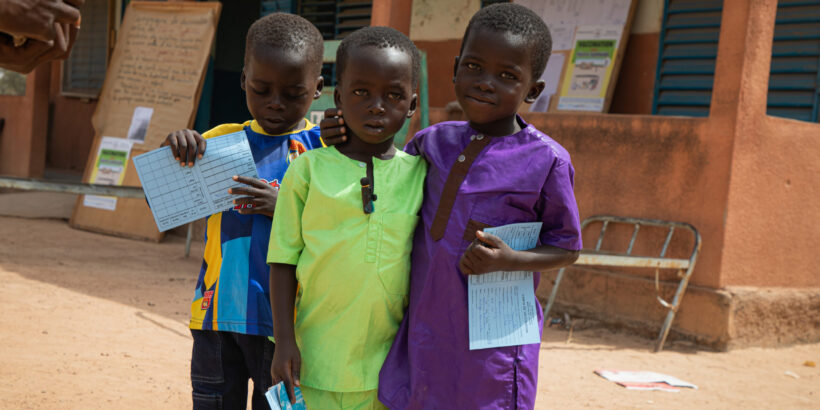Typhoid intestinal perforation (TIP) is a severe and life-threatening complication of typhoid that disproportionately impacts children in resource-limited settings and continues to have devastating consequences worldwide. TIP typically occurs approximately two weeks after initial symptoms and results in holes, or perforations, in the intestines. Patients with TIP require immediate surgery to repair the perforation(s); these cases have a high fatality rate and are costly to families given the high rate of perioperative complications and longer hospital stays.
Delayed diagnosis, as well as ineffective or delayed antibiotic treatment, are key risk factors for TIP. Before complications develop, typhoid is difficult to diagnose due to nonspecific symptoms—such as fever, malaise, and abdominal pain—that are similar to many other acute illnesses. Blood culture, the gold standard for typhoid diagnosis, is often unavailable in areas where typhoid is endemic, resulting in diagnosis based on symptoms or Widal testing, which are both unreliable.
What we know about TIP
If typhoid is left untreated, it can become life-threatening due to serious late complications, including TIP. TIP occurs when Salmonella Typhi bacteria infect specialized immune tissues, called Peyer’s Patches, in the walls of the intestines. This infection can progress to ulceration and perforation. Studies show morbidity and death associated with TIP is substantial in sub-Saharan Africa and Asia, where typhoid is endemic.
Estimates suggest mortality rates are high for TIP patients, with 21% average mortality among all age groups in sub-Saharan Africa and 6% in Asia. Asia has documented a marked decline in mortality from TIP over the last few decades due to improvements in pre-and post-operative management, however this decline has not happened in sub-Saharan Africa. Additionally, children —who are most at risk of getting typhoid—suffer a high mortality from TIP, with rates reaching as high as 30% due to limited resources for pre-and post-operative management in many parts of Africa.
Recovery from TIP is long and challenging. More than half of patients with TIP experience post-operative complications, including wound breakdown, surgical site infections, pneumonia, and re-perforation. Hospital stays are typically long—on average 7 days in Asia and 14 days in sub-Saharan Africa. This translates to missed school for children, missed work for caregivers, and a significant financial strain on families who are frequently sent to referral hospitals far from home. These families support costs associated with health care, transportation, and food for the patient and caregiver. A typhoid cost of illness review found TIP cases were the most costly type of typhoid case to treat. A common method for repairing the intestine requires creating an ostomy, where the small intestine is brought out through the abdominal wall, and a pouch called an ostomy is used to collect stool. In many of these cases, children do not return to school due to difficulties with ostomy management.
TIP as an indicator of typhoid burden
TIP is increasingly recognized as a key indicator of typhoid burden, particularly in countries that do not conduct routine blood culture diagnostics. In countries that experience a high rate of TIP, typhoid is typically diagnosed in the operating room due to the distinct shape and location of the hole(s) in the intestines. Intestinal perforation can therefore be used as an indicator of typhoid burden. Blood-culture confirmation underestimates typhoid burden in endemic countries as not all children with symptoms of typhoid have blood cultures. Few clinics and hospitals in endemic areas can access blood culture testing, and blood culture sensitivity is low—about 50 to 60 percent in acute cases— and is further diminished when antibiotics are given before blood culture collection.
Vaccines to prevent typhoid and TIP
Typhoid conjugate vaccines (TCVs) are safe and effective in preventing typhoid in children for at least four years. By preventing cases, we also prevent typhoid complications, including TIP. Each prevented case is a child who does not get sick from typhoid, caregivers who do not miss work to take care of a sick child, families who do not need to pay often catastrophic costs for treatment, antibiotic doses saved, which helps reduce drug resistance, and health care resources that can be prioritized for other health needs. Typhoid is a preventable disease with vaccines and improved water, sanitation, and hygiene. TIP data, alongside other sources of burden data, can support government decisions about TCV introduction.
Photo: Children vaccinated with TCV during Burkina Faso’s campaign. TCVs prevent typhoid and its complications, including TIP. Credit: TyVAC/Build Africa Communications



